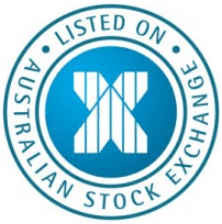
Chris Weston, Chief Market Strategist at IG Markets
There continues to be some extremely interesting scenarios bubbling away behind the scenes in global capital markets, but volatility, or the lack there of, still dominates traders’ mindsets.
We’ve heard commentary from the RBA yesterday around volatility, while Bill Dudley and Richard Fisher from the Fed and Charles Bean from the BoE have also made references to it. But it seems the lack of volatility is a clear concern to many who were predominantly responsible for creating this scenario in the first place. It’s interesting to note that margin debt in the US is actually 6% lower than the all-time peak seen back in February, so we have seen some modest deleveraging of late.
Whether that is a reflection of traders seeing less opportunity or expecting a sell-off is not clear, but certainly the concern is that this period of low volatility is pushing traders to take bigger positions and excessive risks, which, when combined with a bout of more worrying newsflow, could cause instability in markets. It’s this issue that should cause concern from the investment community as well, which naturally isn’t as reliant as traders on range expansion.
We have not seen evidence of increased risk taking from clients, but perhaps certain global leveraged macro funds could be. Certainly if one was to look at the fact that AUD/JPY is up 5% on a total return basis (when you include carry), with AUD/USD, NZD/JPY and CAD/JPY following suit, then you get a sense that funds have not taken such risks and have simply adopted a more conservative approach to trading (perhaps in the hope that there will be better times ahead to profit from trends). Certainly more momentum-focused funds have done well out of the bond market this year, and perhaps the 19 basis-point snap back over the last four days (in the US ten-year treasury) has highlighted the level of positioning in this asset class.
AUD/NZD through the 200-day moving average
On the subject of the AUD, and with UBS suggesting that it sees the AUD (on a trade-weighted basis) 6% overvalued (when adopting the RBA’s own models), it seems the best way to play long AUD right now is against the NZD. The pair looks really constructive having broken through the 200-day moving average today, for the first time since March 14. We haven’t had a daily close above the 200-day since November, so a further extension could be very important. We’ve also seen a strong move through the year’s high and a break of the 50% retracement of the October to January sell-off (at 1.1035), should see the pair target 1.1161.

AUD/USD is eyeing strong resistance at 0.9305 (the 50-day moving average and top of the daily ichimoku cloud), so this seems to be holding up play for now. A break here takes the pair to the former uptrend at 0.9380, where I would be a willing seller. Australia’s Q1 GDP estimates have been revised higher through the week, however today’s 1.1% qoq GDP print was still 20 basis points above the street. A strong contribution from exports was behind the increase, while household consumption advanced a modest 0.5%. The household savings rate remained unchanged at 9.7% and this naturally needs to come down for consumption to ratchet up. Ultimately traders need to question whether this print will change the way the RBA views its policy setting, and the answer to that seems ‘no’.
The ASX 200 has fallen a further 0.7%, following on from yesterday’s bearish outside day, with discretionary names at the heart of the selling. Banks have held in well and should continue to find buyers on pullbacks, as long as volatility is low and the dividend yield they hold has a 5 handle. It seems that the two key catalysts now for the local market are the direction overseas equities take, and the AUD. Certainly the fact the swaps market is pricing in no directional bias with regards to interest rates over the coming 12 months seems absolutely correct, and thus an investment or trading case where interest rates play a key role need not adjust positioning just yet.
Europe likely to open modestly lower
Europe looks set to open modestly lower, with Japan down 0.1%, China CSI 300 lower by 1.2% and the ASX softer by 0.7%. It seems disappointing that we won’t see 10,000 being breached on the DAX in the short term, and perhaps looking for pullbacks in this index to the 9850 area seems prudent for now, especially if the market sells the fact in the equity market post ECB meeting.
Traders will be eyeing Europe service data, while we will also get a revision to the recent weaker-than-expected GDP print (+ 0.2%). In the US we get the May ADP report (210,000 jobs expected), while we also get the US services ISM report (expected to improve to 55.5). We also get the Beige book, while Fed member Narayana Kocherlakota (a dove) speaks on interest rates, so his views will be closely watched. The Bank of Canada also meets with traders suggesting there are chances we get more upbeat commentary around inflation expectations, although I feel this could come in its July meeting.

